Redcar’s original ex-Woolies – and a new real shop among the virtual ones
One of my main motivations for visiting Redcar yesterday was to get a photo of the town’s original former Woolworths at 19 High Street, above, which – inexplicably – I’d failed to spot when I was there the previous time.
I should have known from the store number of the Redcar Woolworths – 275, giving an opening date of 1929 – that the more modern building at 39-43 High Street, now occupied by the Yorkshire Trading Company, below, couldn’t have housed Redcar Woolies since the beginning.
Redcar’s original Woolworths, as regular readers will expect by now, is classic interwar Woolies architecture, with all the usual features – redbrick and white render, with small windows either side of a three-bay-wide pedimented section. Curiously, there are two additional bays on the right-hand side, suggesting that it was at some point extended – rather like the store in Llandudno.
The design of the main section, interestingly, is almost identical to the original Woolworths in Byker’s Shields Road, below, though Redcar’s is in a generally better state of repair. This similarity is unsurprising – Byker was store number 276 to Redcar’s 275, meaning that the two stores would have been built and opened within just a few weeks of one another.
The old postcard, below, shows a yet-to-be-pedestrianised Redcar High Street in what I think is the 1950s, with the Woolworths store visible, in its original location, on the far right.
If you click on the image above to enlarge it, you can see that the Woolworths store has its upstairs windows open, revealing an art deco design very similar to those shown in the photo of the Byker store. Sadly, I understand that the Byker ex-Woolies’ original windows have been ripped out and replaced in just the last few months.
One piece of information I’m not clear about is when exactly Redcar’s Woolworths moved from its original location to the new site. My hunch, however, is that it may have been in the late 1950s, given that the replacement store still has in place its distinctive 1960s Woolworths shopfront, complete with shiny black stall riser [UPDATE: A former member of staff tells me there was graffiti in the lift that pointed to a 1955 opening!].
Bringing this post nicely full circle with the previous one, about Redcar’s ‘virtual shops’, the town’s original Woolies site happens to be a property that has only recently acquired a new occupant after years of standing empty. The expanding fashion retailer Store Twenty One opened its new store there only a few weeks ago, reunifying the two parts of the building that had previously housed a McDonald’s restaurant and a card shop.
This makes Redcar the fourth Store Twenty One branch in the North East to have a Woolworths history, following the chain’s recently opened stores in Stanley, Jarrow and Houghton-le-Spring (pictured below) – all sites vacated following Woolworths’ 2008 collapse. Just as elsewhere, the retailer’s new Redcar store is surprisingly smart and appealing for a value chain, and certainly makes a positive impression on the streetscape.
Owned since 2006 by Indian textiles group Alok, Store Twenty One may not be an especially well-known retail name, but its aggressive expansion in the last few years has certainly played an important role in regenerating North East high streets – often in locations that other retailers might have overlooked.
The downside, of course, is the restructured business’s failure, as yet, to make a profit, though pre-tax losses for the group (including QS, as well as Store Twenty One) have fallen from a peak of £27.5m in 2007 to ‘only’ £6.4m in 2010. With the owners promising a “definite” profit for the year ending March 2011, it has to be hoped that Alok’s investment in new and improved stores comes good before too much longer.
With the ex-Woolies in Hartlepool and Middlesbrough now in new tenants’ hands (as BHS and Discount UK repectively – more on that in a future post), my reckoning is that of the 33 North East stores closed following Woolworths’ collapse, just four remain empty – in Wallsend, Peterlee, Newton Aycliffe and Newcastle. Coincidentally, none of these are locations where Store Twenty One currently has a presence.
With Alok reportedly seeking to double its UK store numbers from the current 200+, perhaps it could yet snap up the lot? Whenever it happens – and it may not be too much longer – the North East achieving a 100% hit rate of Woolies reoccupations will certainly be a cause for celebration, reinforcing the sense that even in the midst of an economic downturn there are still plenty of expanding retailers seeking out the right space.

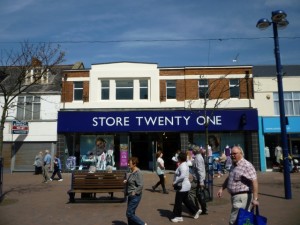






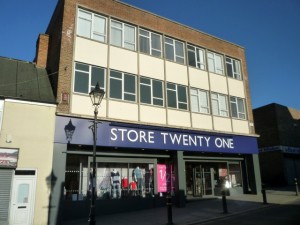



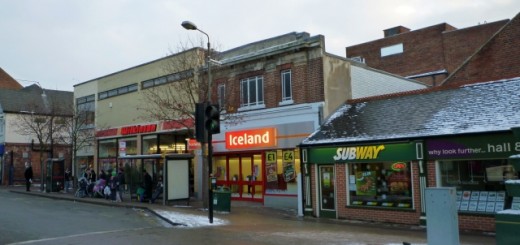



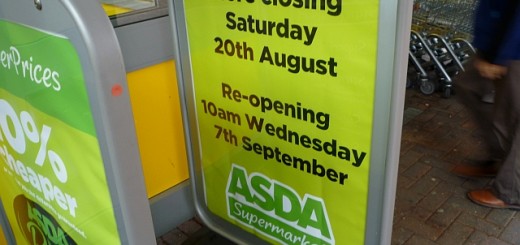
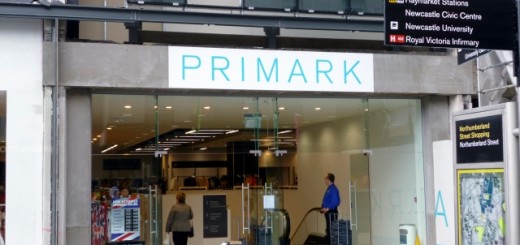

8 Responses
[…] I briefly noted last week, Middlesbrough’s ex-Woolworths store isn’t the only one on Teesside to have recently […]
[…] readers will know that many of the Woolworths I’ve blogged about in the past feature the distinctive architecture that characterised the chain’s purpose-built stores of the 1920s and 30s. This is barely […]
[…] of its Jarrow shop in July last year. There are also Store Twenty One branches in place of the former Woolworths stores in Stanley and Houghton-le-Spring, as well as another within a historic Woolworths building in Redcar. Mothercare, South Shields (8 […]
[…] yesterday, when the finishing touches were being applied to the store’s interior. As with the North East’s other ex-Woolies Store Twenty One shops – in Stanley, Houghton-le-Spring, Jarrow and the original (pre-1955) Woolworths site in […]
[…] expected to be released soon, but it’s another welcome boost for a street that recently saw Store Twenty One take over a long-empty ex-McDonalds unit and seems to be getting to grips with its empty shop […]
[…] before being taken over by the increasingly ubiquitous value fashion retailer Store Twenty One. As elsewhere, Store Twenty One has created a good-looking store, with a new shopfront and tasteful […]
[…] Woolworths’ purpose-built stores before the Second World War – such as the original Redcar and Byker shops – the chain’s approach to property after the war began to […]
[…] Source: Soult, G. […]